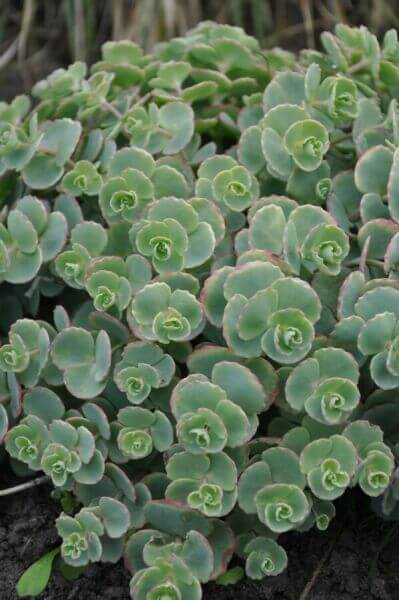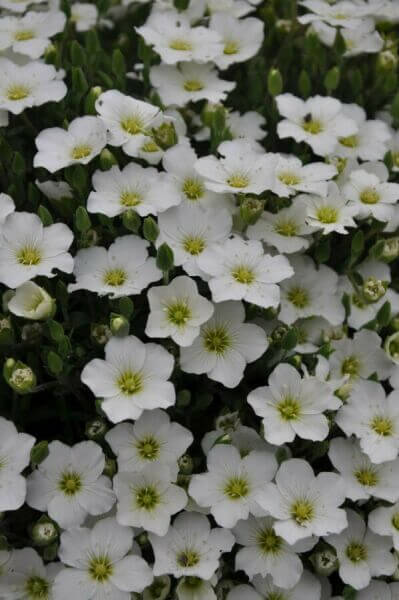Best Hedging Plants For Perimeter Hedges
Best Hedging Plants For Perimeter Hedges
Blog Article
Hedging Plants For Autumn Color
Enhance your garden's allure with lavish hedge ranges such as Yew (Taxus), Thuja, Laurel, Photinia, and Bamboo, celebrated for their structural integrity and ecological benefits.
Yew and Thuja offer evergreen coverage and winter resilience, while Laurel offers rapid development and broad, fragrant leaves.
Photinia includes seasonal charm with its dynamic red foliage, and Bamboo lends a low-maintenance, tranquil ambiance.
These hedges improve air quality, reduce sound, and create tranquil, personal spaces.
Appropriate planting, spacing, and upkeep ensure energetic development and environmental harmony.
Explore how these lavish varieties can elevate your garden's appeal and wellness.
Secret Takeaways
Change Your Garden With Lush Hedge Varieties
- Select Yew for its thick, evergreen development and unrivaled longevity.
- Go with Laurel for its fast development and broad leaves, ensuring quick personal privacy.
- Pick Photinia for its vibrant seasonal foliage, which turns a striking dark red.
- Use Bamboo for a low-maintenance, winter-hardy hedge with aesthetic appeal.
- Area plants 2-3 per meter and prune regularly for optimal growth and health.
Popular Hedge Plants
When changing a garden with lavish hedge ranges, it's vital to consider popular hedge plants such as Yew, Thuja, Laurel, and Photinia due to their unique characteristics and benefits.
Yew (Taxus) is extremely esteemed for its longevity and dense, green growth, making it a prime choice for withstanding landscapes.
Thuja is noted for its evergreen foliage and robust winter resilience.
Photinia includes seasonal vibrancy with red leaves that darken with time, creating dynamic visual appeal.
Laurel provides rapid growth and fragrant, broad leaves, perfect for quick privacy.
Furthermore, Bamboo is an outstanding option for atmosphere, providing a low-maintenance, winter-hardy choice that improves the garden's aesthetic with its sophisticated, swaying walking sticks.
These choices accommodate a variety of horticultural requirements and choices.
Benefits of Garden Hedges
Garden hedges offer a multitude of benefits, making them a valuable addition to any landscape. These natural barriers are cost-effective to execute and offer significant wind defense, enhancing air circulation and contributing to sound reduction. The dense foliage of hedges like Thuja and Beech makes sure personal privacy by blocking exposure, creating a serene and remote environment.
Hedges also play a crucial function in microclimate policy, supplying a stable environment that promotes plant development and reduces temperature level changes. Their detailed leaf structures filter contaminants, enhancing air quality and contributing to a much healthier garden environment.
Additionally, hedges master sound reduction, soaking up and deflecting sound waves to lower ambient sound levels. This double performance of offering both acoustic and visual personal privacy enhances the overall serenity and aesthetic appeal of any garden.
Planting and Maintenance Tips
For a successful hedge, meticulous preparation of the planting location is vital. Guarantee the soil has correct pH and drainage to support strong root development.
Space the plants properly for the selected types. Water the hedge frequently during its preliminary development phase, adjusting as required with seasonal changes.
Execute a organized pest control and disease avoidance method, using natural or chemical treatments when necessary. Frequently check for aphids, mites, and fungal infections.
Apply mulch to keep wetness and reduce weeds. Seasonal pruning promotes dense development and air blood circulation, essential for plant health.
Following these guidelines will help you cultivate a dynamic, properly maintained hedge that boosts the beauty of your garden.
Spacing and Trimming Guidelines
Spacing and Trimming Guidelines
Proper spacing and trimming are essential for cultivating healthy, visually appealing hedges. Sufficient spacing ensures each plant receives sufficient nutrients, light, and airflow.
Follow these guidelines for optimal hedge maintenance:
- Spacing: Position hedge plants 2-3 plants per meter to motivate robust development.
- Pruning Techniques: Regular pruning is essential for maintaining wanted hedge height and shape. Cut brand-new development in summertime and cut back older wood during winter.
- Seasonal Care: Change cutting approaches and schedules according to seasonal requirements to guarantee plant health.
- Hedge Height: Frequently display and cut to keep the preferred hedge height and attain uniform visual appeals.
Adhering to these steps will ensure your hedge grows, boosting both the appeal and performance of your garden.
Choosing the Right Hedge
Picking the Right Hedge
Choosing the proper hedge involves examining elements such as mature height, foliage density, and ecological resilience. Successful hedge plant choice requires comprehending each types' growth qualities and site-specific versatility.
For instance, Yew (Taxus) offers outstanding durability and dense growth, while Thuja is notable for its winter season resilience. Furthermore, thinking about upkeep requirements is vital; fast-growing species like Laurel or Privet need regular trimming, whereas low-maintenance choices like Bamboo or Ivy might be more suitable for those looking for minimal maintenance.
Environmental factors such as soil type, light schedule, and wetness conditions ought to likewise direct the choice procedure. This mindful technique makes sure the picked hedges will grow, providing both aesthetic and functional benefits to the garden landscape.
Delivery and Planting Advice
To ensure your hedge plants thrive, they need to be provided by specialized carriers and planted promptly upon arrival.
Follow these necessary actions for effective planting:
- Soil Preparation: Enhance the soil with organic matter to enhance drain and nutrient material.
- Planting Depth: Produce a trench two times the width and equal to the depth of the root ball.
- Watering Methods: Water thoroughly after planting, keeping the soil consistently wet but not saturated.
- Mulching: Use a layer of mulch to maintain wetness and reduce weeds.
Customer Assistance and Service
Given the important function of timely help in horticultural pursuits, our consumer support team is available six days a week through telephone, email, and social media to provide skilled suggestions and swiftly address any issues. Their devotion to fast response times ensures customer satisfaction by dealing with inquiries associated with plant health, ideal planting techniques, and maintenance schedules.

Within 48 hours
This detailed support group, strengthened by an excellent 9.3/ 10 client ranking, highlights our dedication to enhancing the gardening experience for every client.
Often Asked Questions
For How Long Does It Take for Hedge Plants to Establish?
Hedge plants typically require one to three years to become completely developed, with the precise period varying by species and growing conditions.
Efficient care during this crucial period is essential for robust growth. Constant watering, alert weed control, and proper fertilizer application are essential in promoting strong root advancement.
For instance, fast-growing types like Laurel might develop faster, while slower-growing ranges such as Yew might take longer. Diligent upkeep speeds up the facility process, resulting in thick and healthy hedges.
What Are the Best Hedge Plants for Privacy?
The question of the very best hedge plants for personal privacy involves evaluating evergreen and deciduous alternatives.
Evergreen hedges like Thuja, Laurel, and Cypress offer year-round coverage, ensuring constant privacy.
In contrast, deciduous hedges such as Beech offer seasonal privacy, shedding leaves in cooler months.
Key maintenance tips for personal privacy hedges include regular cutting, fertilizing in spring, and appropriate spacing-- typically 2 to 3 plants per meter.
In addition, consistent watering and diligent weed elimination are essential for promoting healthy, thick development.
Can Hedge Plants Attract Wildlife to My Garden?
Yes, hedge plants can bring in wildlife to your garden by offering necessary benefits like shelter, food, and nesting sites, therefore improving regional biodiversity. For example, yew, holly, and laurel are excellent for drawing in birds, while ivy supports a variety of bugs.
Nevertheless, it is essential to keep in mind that there are some drawbacks, such as increased upkeep to handle pests and routine upkeep. Carefully choosing and keeping hedge varieties can assist stabilize these benefits and downsides, eventually fostering a sustainable and lively ecosystem in your garden.
Are There Any Blooming Hedge Plants Available?
Yes, there are flowering hedge plants readily available that can improve the appeal of your garden.
For instance, Elaeagnus, also referred to as Olive Willow, produces aromatic white flowers in the fall, including a touch of elegance.
Photinia, another popular choice, showcases dynamic red leaves that grow into a rich green, creating a dynamic visual result throughout the seasons.
To make sure these plants thrive, it's important to practice appropriate pruning methods and seasonal upkeep, such as cutting brand-new development in the summer and cutting back in the winter.
These steps will help preserve the health and visual appeal of your blooming hedges.
How Do I Avoid Bugs in My Hedge Plants?
To avoid bugs in hedge plants, use natural bug control methods and maintain proper hedge care. Introduce beneficial insects like ladybugs, which prey on harmful pests, to create a balanced community.
Routinely check your hedges for indications of invasion and immediately eliminate any affected parts to avoid the spread. Guarantee the health of your hedges by applying balanced fertilizers and providing adequate water.
Utilize mulching to maintain soil wetness and appropriate spacing to decrease plant stress and promote robust growth. These practices jointly assist in reducing bug issues and keeping a healthy hedge.
Conclusion
In essence, picking the right hedge varieties such as Yew, Thuja, and Laurel can transform any garden into a peaceful haven. These hedge plants plants supply year-round plant, enhance visual appeal, and deal useful benefits like sound decrease and wind security.
Proper planting strategies, accurate spacing, constant watering, and seasonal cutting are important for optimum growth.
Reputable delivery services and skilled consumer assistance ensure a smooth experience from purchase to planting, making it simpler than ever to raise your outdoor area.
Garden hedges provide a multitude of benefits, making them an important addition to any landscape. These natural barriers are economical to implement and offer significant wind security, enhancing air flow and contributing to noise reduction. The thick foliage of hedges like Thuja and Beech ensures personal privacy by obstructing exposure, creating a serene and secluded environment.

Pruning Methods: Regular pruning is essential for keeping preferred hedge height and shape. Trim brand-new development in summer and cut back older wood throughout winter.
Report this page